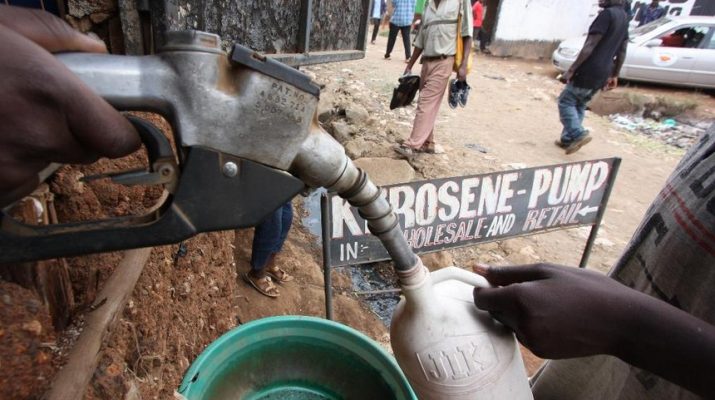Liquefied petroleum gas which is currently seen as a better alternative by Kenyan households due to increased affordability has posed a huge threat to the Kerosene market.
The trend in demand for both fuels has been marked with sharp differences in the past two years, despite a significant drop in retail prices which started with the crash in global oil markets in mid 2014.
Kenya National Bureau of Statistics data show, kerosene prices dropped by 50 per cent from an average of Sh84.45 per litre in August 2014 to Sh43.15 in August 2015.
The consumption of Kerosene has however remained sluggish at 379.62 metric tonnes annually compared to an annual average of 323.02MT that was recorded before the prices fall begun.
On the other hand, the data shows the price of the benchmark 13Kg cooking gas cylinder fell from Sh3109.67 in August 2014 to Sh2078.67 in the same period in 2016.
This caused a spike in demand for LPG from an average of 40MT annually to 104MT.
During the two-year period, crude remained cheap in the international markets amid oversupply by the Organization of the Petroleum Exporting Countries.
The global benchmark Brent crude recorded a significant drop in prices from $103.59 (Sh10,521.64) per barrel in 2014 to $44.70 (Sh4,540.18) in 2016.
The Energy Regulatory Commission reviews the prices of all petroleum fuels sold in the country every month, except LPG.
LPG is seen as more clean energy source, far better than Kerosene which is blamed for increased health problems among its users. According to ERC, the standardization of the cooking gas cylinder valve has significantly increased confidence in the use of LPG gas.
The commission plans to introduce an excise duty of Sh7.20 per litre of Kerosene sold from next month.
This will further add to the gains made by LPG distributors, largely the small vendors who have taken over a more than 70 per cent market share by selling cooking gas in the estates.

